Rochdale Canal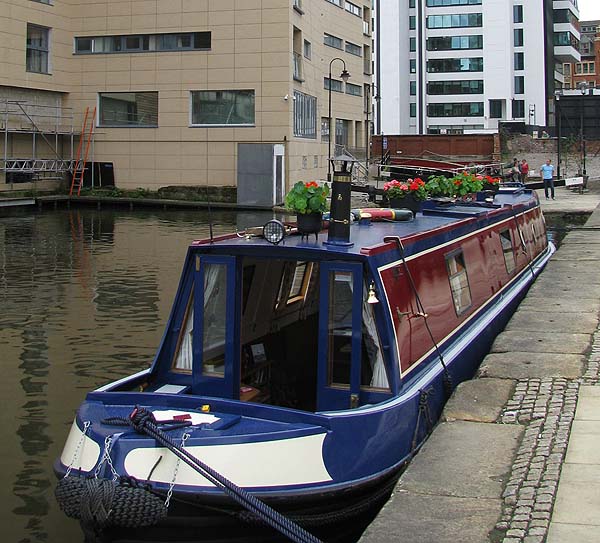 Construction of the
Rochdale Canal started in 1794 after the passing of
the Rochdale Canal Bill. It was designed to link
the Bridgewater Canal in Castlefield, Manchester, with
the Calder and Hebble Navigation at Sowerby
Bridge in West Yorkshire. The canal was first
mooted in 1766 but a variety of problems needed to be
resolved before permission to build the canal was
finally secured. Among those difficulties was just
how the canal would cross the summit of the Pennines,
and overcoming the refusal of the Duke of Bridgewater to
allow the Rochdale Canal to join his canal in
Castlefield. By 1799 the Rochdale Canal was opened
into the heart of Manchester's industrial/commercial
centre. By 1890 2,000 barges were plying the canal
carrying 700,000 tons a year. However, competition
with the railway saw a sharp decline in trade and by the
beginning of the 20th Century the canal was in serious
difficulty. By 1952 only the section through
Manchester's city centre was still operating but by the
1960s much of that remaining section was unusable.
A restoration movement in the 1990s saw the canal
reopened between Sowerby Bridge and Castlefield.
The images below trace the progress of the Rochdale Canal through the Manchester City centre starting in Ancoats. Here the canal is passing the former Flint Glass factory of Percival, Yate & Vickers. Much of the old factory has gone and around the remaing buildings this residential complex, called Flint Glass Wharf, has been created. 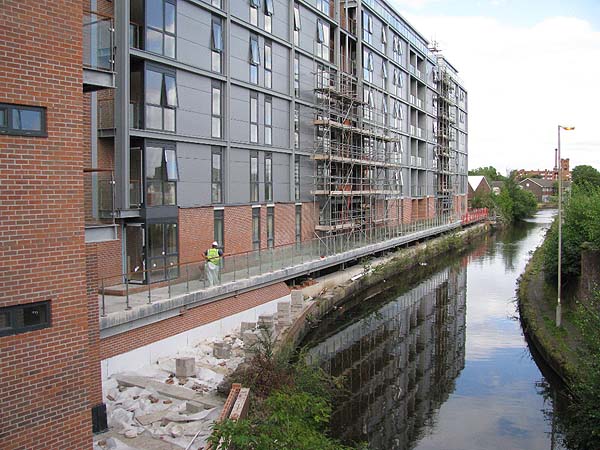 The canal passes
beneath the New Union Street Bridge just beyond
Flint Glass Wharf.
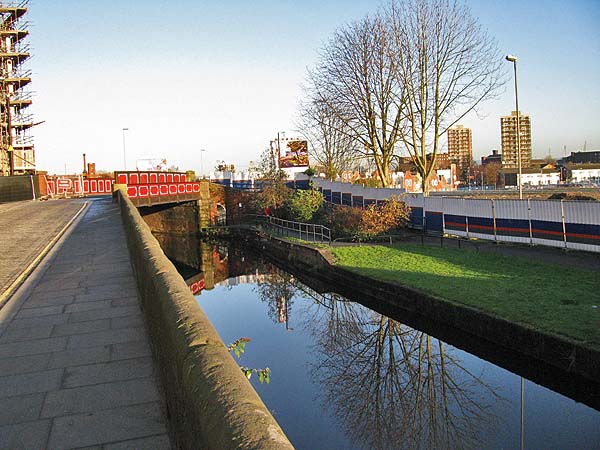 Progress at this point
takes the canal between the restored Royal/Murray
Mills and the yet to be completed New Islington
development.
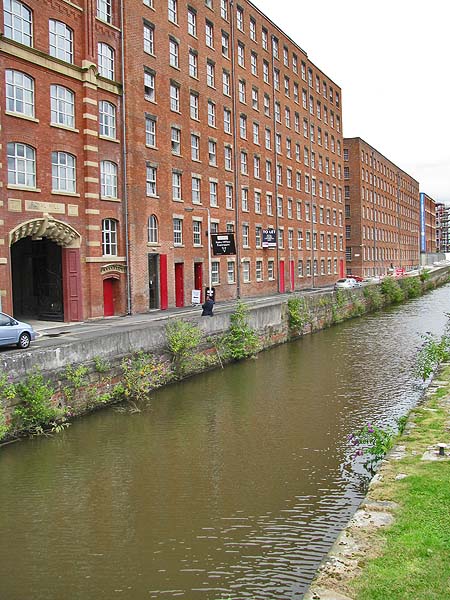 A small footbridge,
called The Kitty Bridge, spans the canal as it
approaches Great Ancoats Street. Nearby Lock 82 lowers boats
coming into Manchester allowing them to pass beneath
Great Ancoats Street.
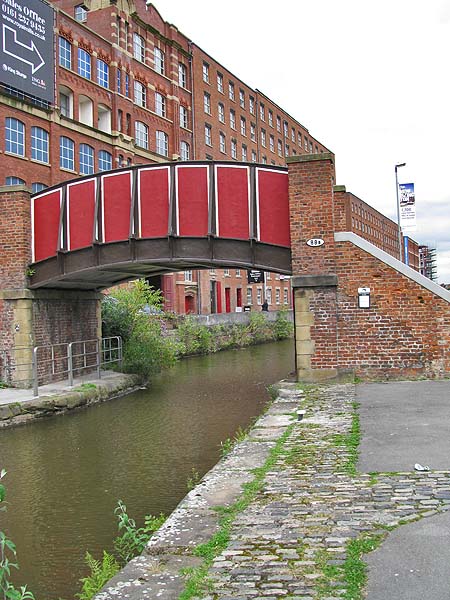 Beyond Great Ancoats
Street the canal passes the Brownsfield Mill before
encountering Lock 83 which lowers it once more to pass
beneath the
Tariff Street bridge.
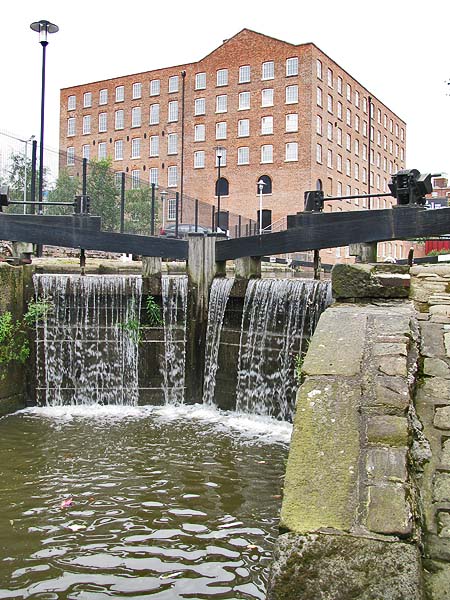 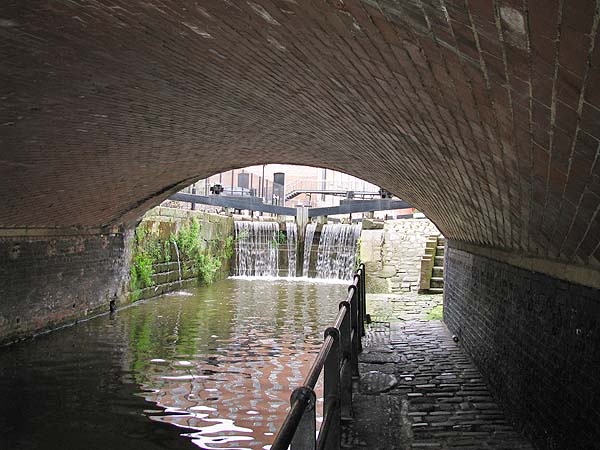 Having passed beneath
Tariff Street boats now enter the Piccadilly
Basin. Former warehouses in the basin have been
restored for a variety of commercial and residential
purposes and newer developments surround the canal at
this point.
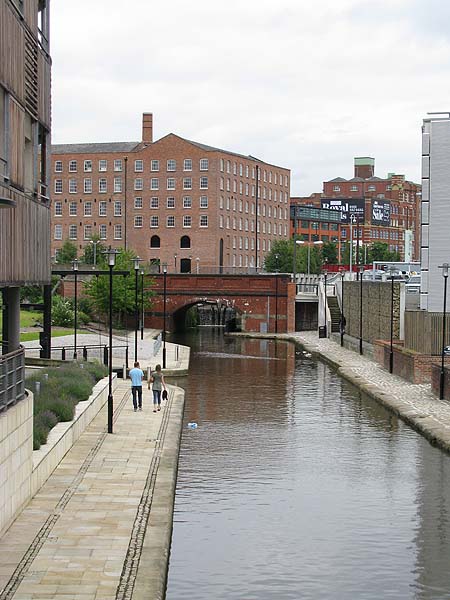 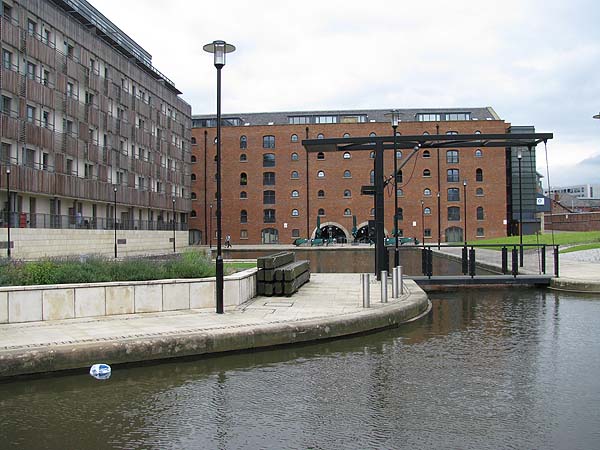 It is in the Piccadilly
Basin that the Ashton Canal joins the Rochdale Canal. You can see the
Ashton Canal appearing on the left of the image below
having passed beneath the bridge on Ducie Street.
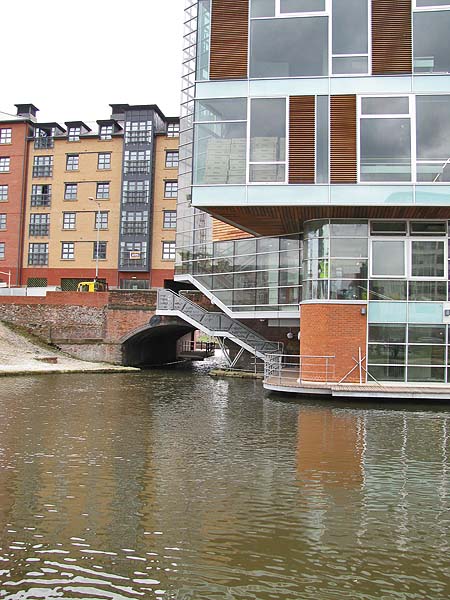 Lock 84 stands at
the Dale Street end of the Piccadilly Basin and marks
the beginning of an underground segment of the canal
taking it beneath Piccadilly before re-emerging beside
Auburn Street in the vicinty of Aytoun Street.
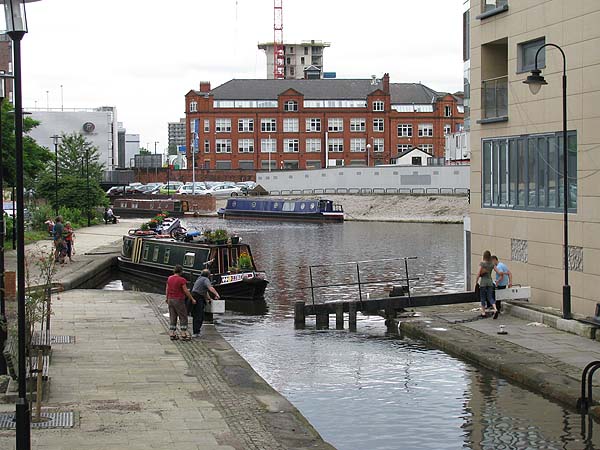 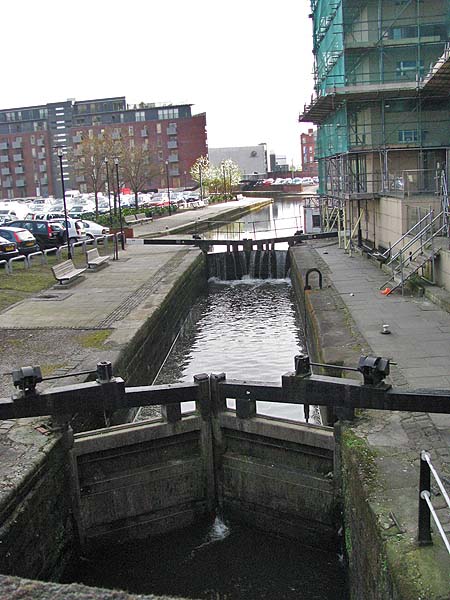 After the canal passes
under Aytoun Street it emerges beside the Police &
Crown Courts. Once underneath the Minshull
Street Bridge, the canal continues beside Canal
Street, the heart of Manchester's Gay Village.
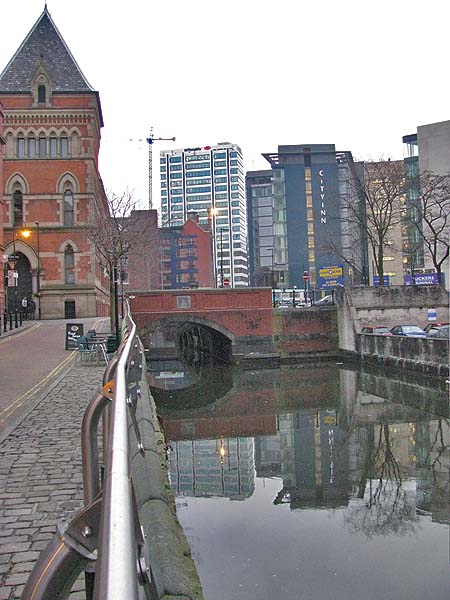 Below is Lock 86 beside Canal Street. 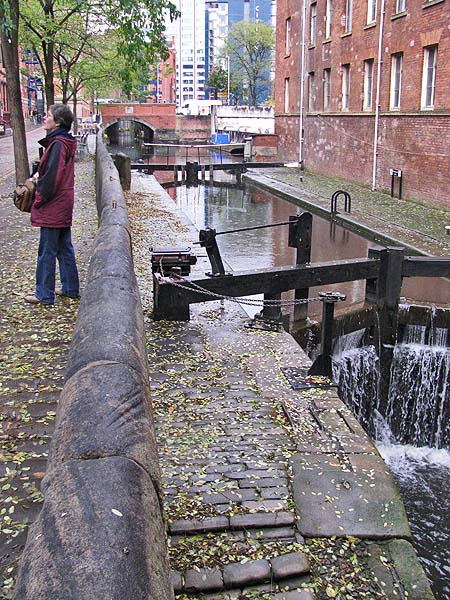 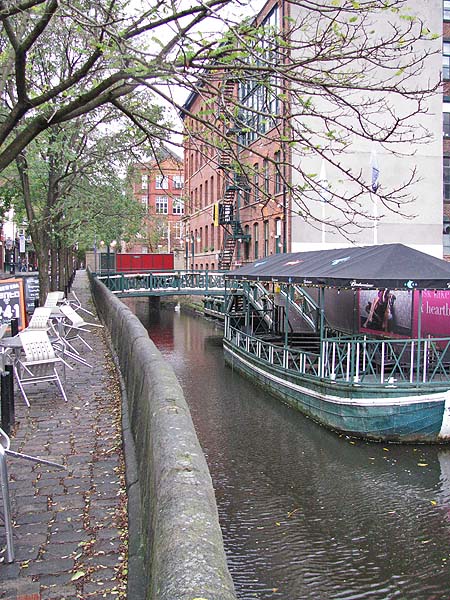 Lock 87 near the junction of Canal Street and Princess Street. 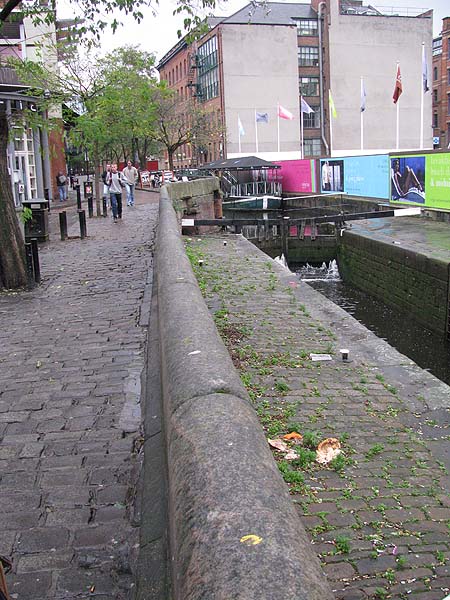 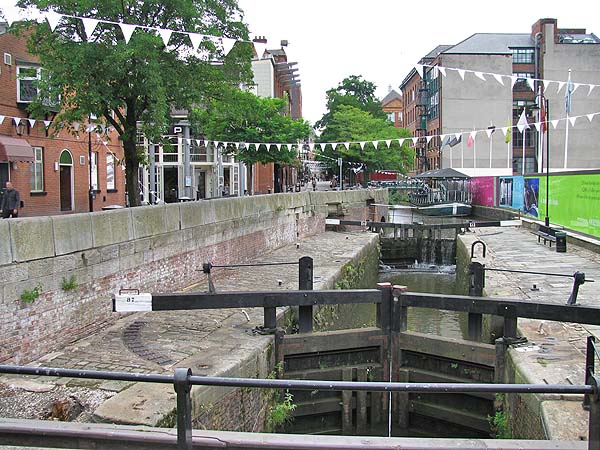 After crossing below
Princess Street, the canal appears again in a long
straignt section that seems to come to a dead
end. However, you can just glimpse Lock 88 which
lowers the canal again to allow it to travel beneath
the St. James Building and Oxford Street.
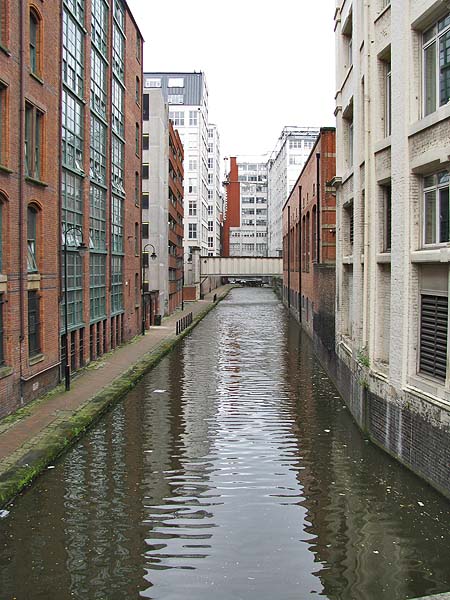 Below Lock 88 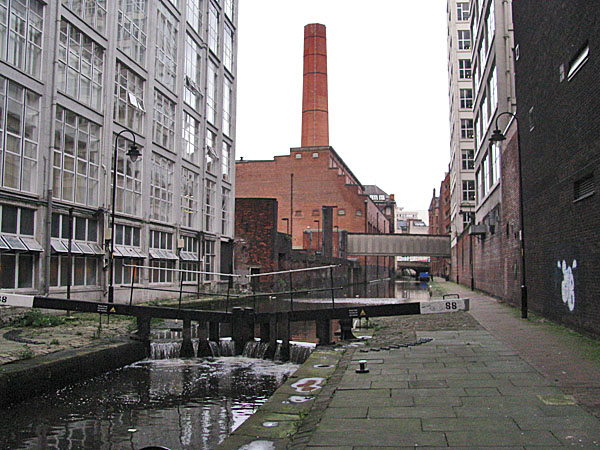 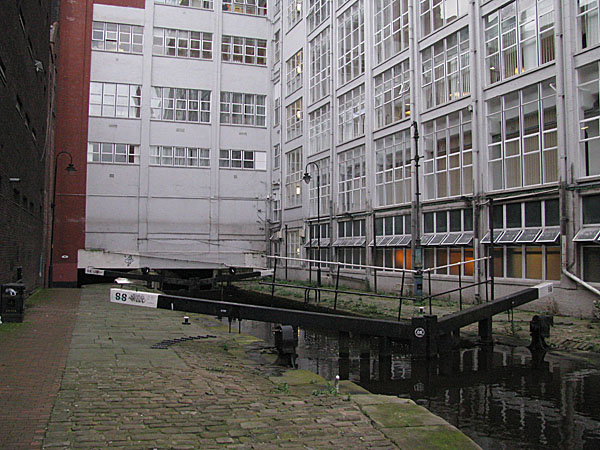 Here the canal passes beneath the St. James Building and Oxford Street. 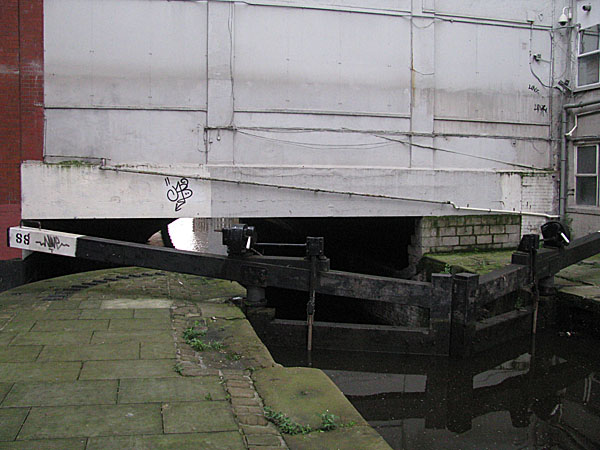 Once it has passed beneath Oxford Street, the canal re-emerges beside the Tootal Broadhurst Building, Churchgate House, and the apartment blocks along Whitworth Street West. 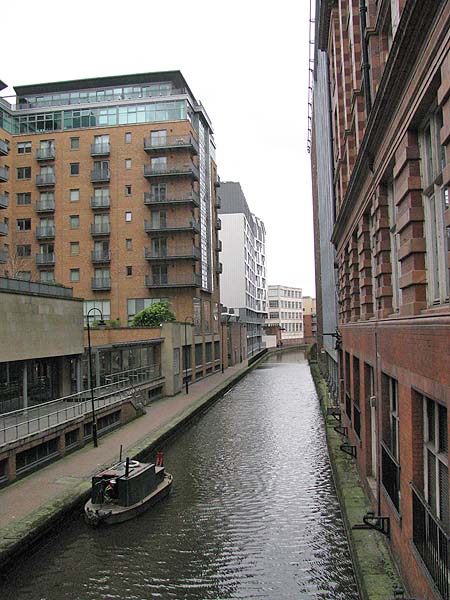 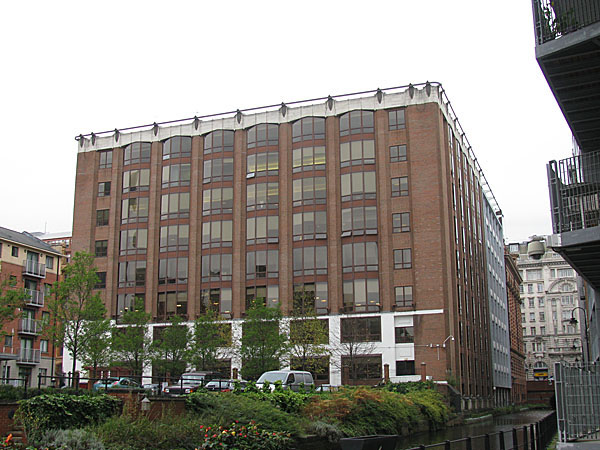 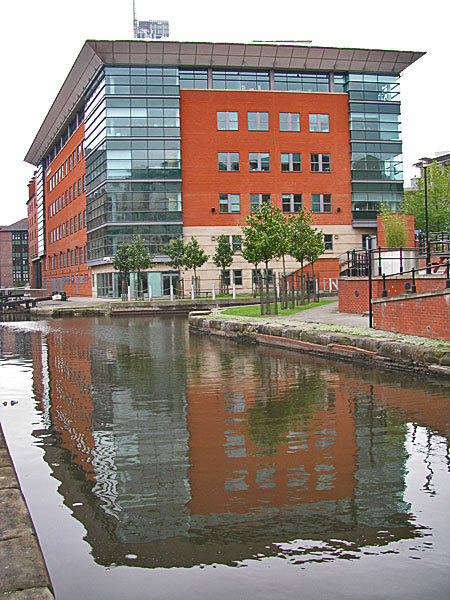 Just before the canal
reaches Lock 89 a side canal joins with it. This
is a remnant of the former Manchester and Salford
Junction Canal. (This canal once started at the
Irwell near Water Street and passed beneath the
present Granada Studios, Deansgate and the Midland
Railway Goods Yard and finally below the former
Central Station until re-emerging beyond Lower Mosley
Street in the vicinity of the Bridgewater Hall.)
You can see the
junction of these two canals on the left of the
image below.
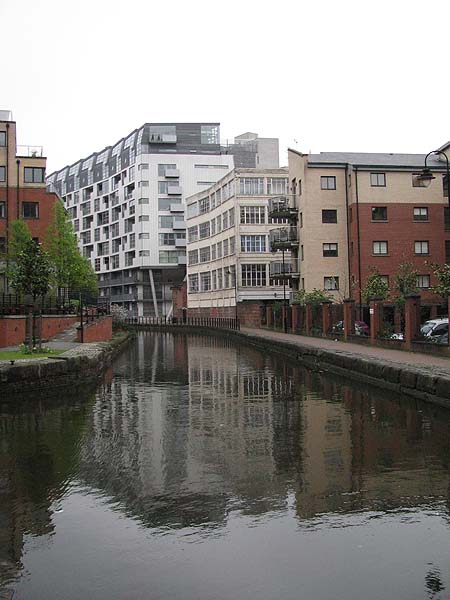 Here is the Junction Canal as it passes the Bridgewater Hall on its way to the Rochdale Canal. 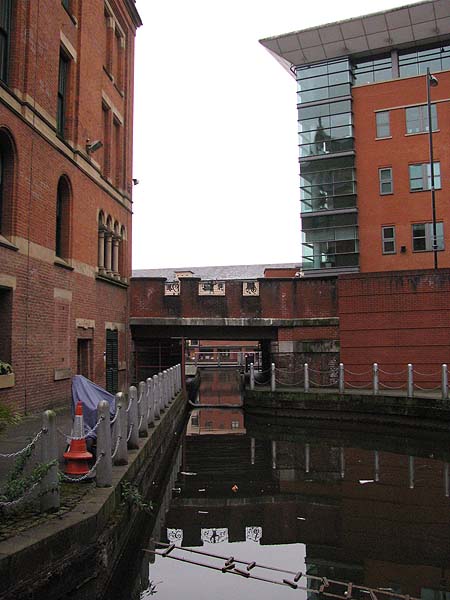 Today most of the
underground sections of the Junction Canal lie
hidden and unused. This remanant begins in an
ornamental poool beside the Bridgewater Hall and
Barbirolli Square.
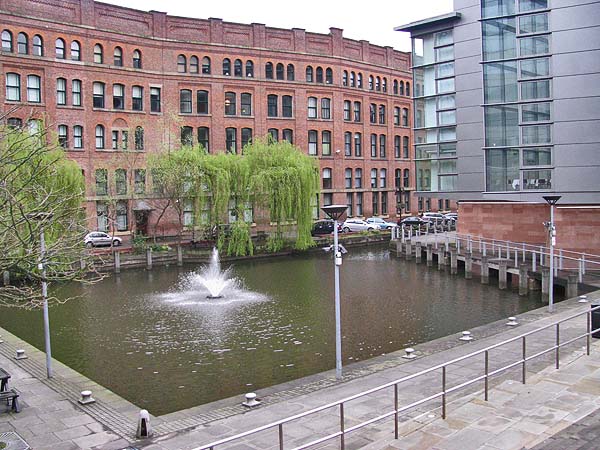 Returning to the Rochdale canal, this is the view from the bridge on Lower Mosley Street. It looks back towards Lock 89 in the distance. 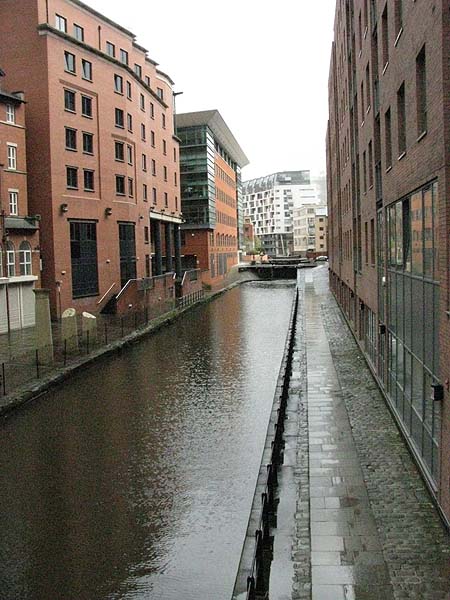 After Lock 89, the canal
passes between Albion Wharf and The Hacienda
apartments. It goes beneath the Gaythorne Bridge
and enters Lock 90.
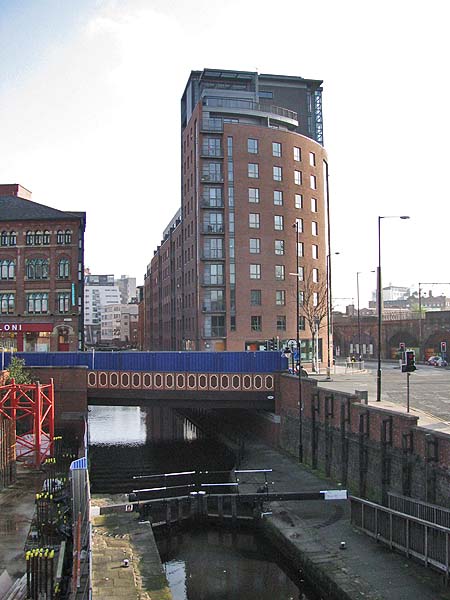 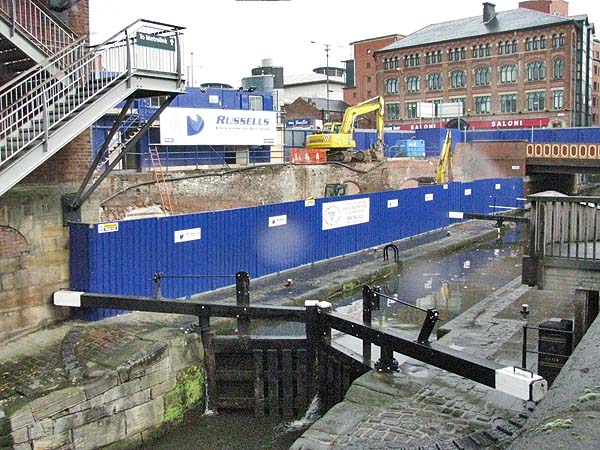 As the canal carries on
beside Whitworth Street West it passes a series of
bars built into the arches below the railway
viaduct.
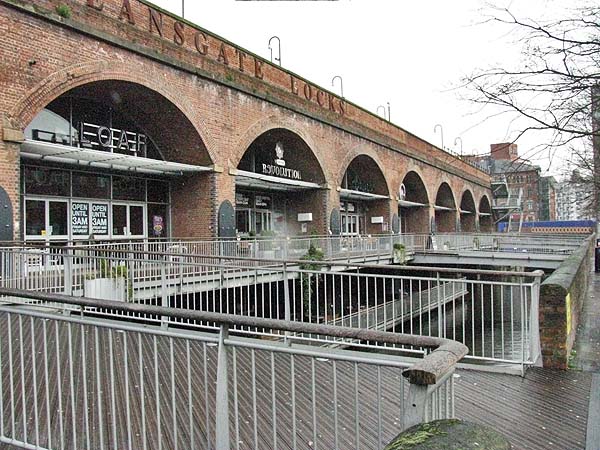 At the end of this
stretch is Lock 91 which lowers the canal before it
enters the Gaythorne Tunnel.
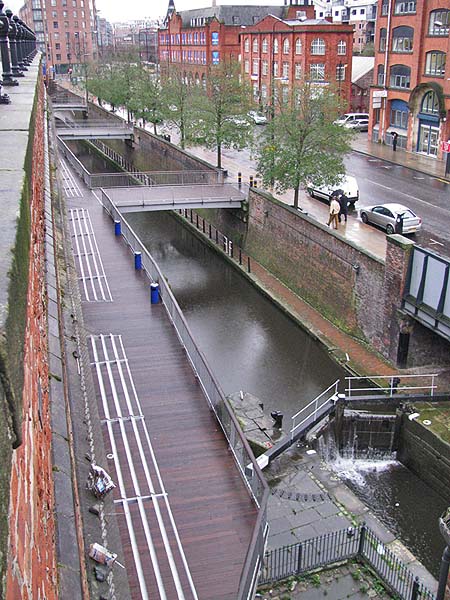 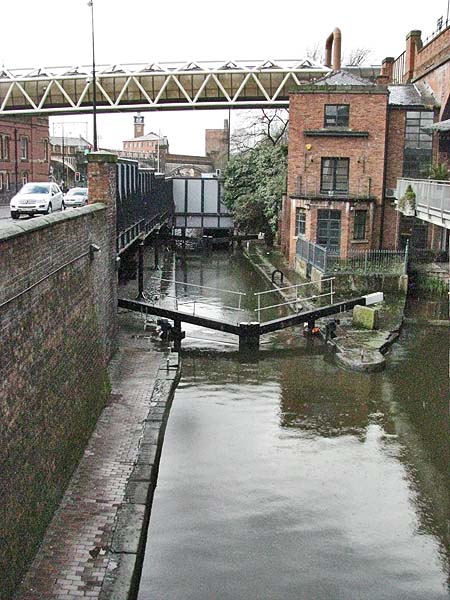 The canal reappears on the other side of Deansgate and passes beneath one of the railway bridges. 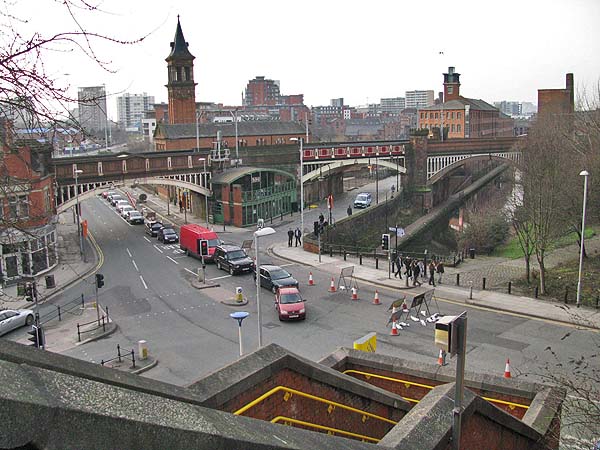 This was the last stretch of the canal before Lock 92, the Duke's Lock, which lowers the canal for the last time before it passes under this stone bridge into the Castlefield Basin of the Bridgewater Canal. 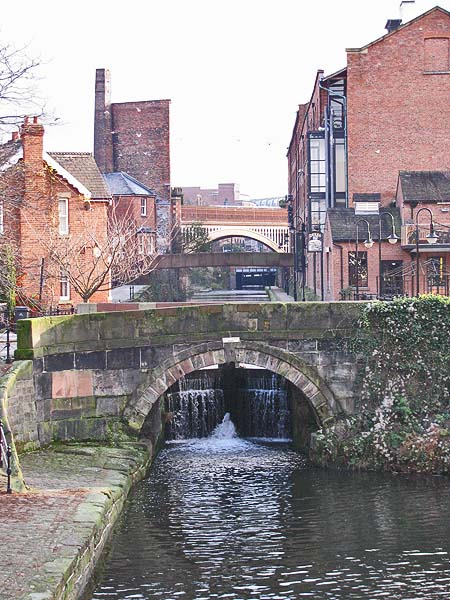 Close Window |